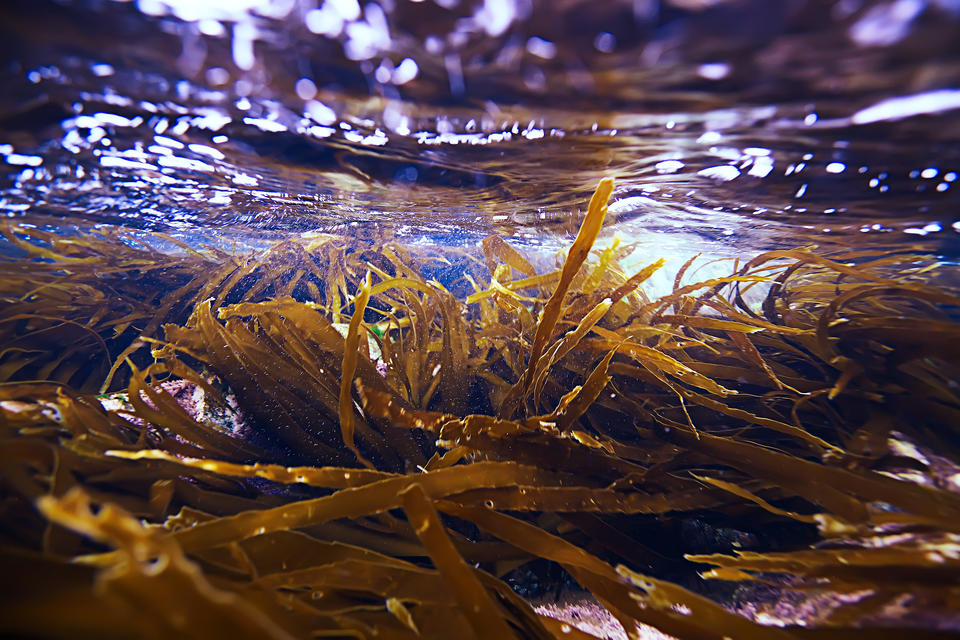Taking Measure
Just a Standard Blog
Improving Recycling, Tracking Mercury and Analyzing Kelp: A Sample of Eco-Friendly Research Featured on NIST Social Media
Preserving our planet's health is no small feat, and NIST researchers are tackling the challenge from multiple angles. From a more sustainable system for our plastic products to a kelp standard for conservation efforts, NIST’s experts are working toward a more resilient Earth. Catch up on a few of the happenings at NIST with an environmental focus, as told during the past few months on NIST social media.
The Behavior of Polymers in Our Recycled Plastics
Not all plastics are the same, and they don’t all blend together well during recycling. At NIST, researchers are looking for ways to make recycled plastic stronger and more valuable. It’s all about the chemistry.
Recycling plastic involves melting the material down and then molding or extracting it into new shapes. If different types of plastics are melted and mixed together, their building blocks, called polymers, may not adhere well to each other when they crystallize.
That’s exactly what this video shows. See through a microscope as polymers from mixed plastics crystallize. In the beginning, when the plastic is melted, the polymers point in all directions, and the resulting color is magenta. As the molten plastic cools, the polymers crystallize. Yellows indicate areas where the polymers align in one direction, while the blues show a different direction.
If the polymers do not align and adhere to each other properly, the resulting plastic can be brittle and weak.
If scientists can get the polymers from different types of plastic to have good chemistry together — so they line up nicely when they crystallize — then recycled plastics will be stronger and more valuable.
When recycled plastic is more valuable, it’ll be seen as an important raw material rather than a waste product. That will mean more recycled plastic in our products and less plastic pollution in our oceans.
This is the vision of the circular economy.
Tracking Methylmercury, a Toxic Substance in Natural Waters

Mercury — the only metal that exists in liquid form at room temperature — may move like water, but its effect on the environment certainly isn’t refreshing. We’re helping researchers, industry and environmental regulators track it.
This mercury isn’t the pure element on your periodic table. Once it enters the atmosphere via industrial processes and falls with the rain into our waters, microorganisms in the environment convert the toxic material into a form (methylmercury, or MeHg) that can readily cross biological membranes.
The substance can accumulate and magnify as it’s absorbed into the food chain, which means:
A tiny organism with MeHg gets eaten by a small fish with MeHg ...
Which gets eaten by a bigger fish with MeHg ...
Which gets eaten by an even bigger fish with MeHg ...
Which gets eaten by a top predator fish with MeHg ...
Which gets eaten by a person.
This hypothetical chain has five creatures, each one contributing to the next one’s level of the hazardous mercury form, before it reaches the person. All of that MeHg ends up in the person’s system. And just think about the accumulation if the person eats predator fish every day.
Environmental organizations use specialized instruments to measure amounts of mercury in natural waters, but how do they know their tools are working properly?
Cue NIST’s Standard Reference Material (SRM) 1641e, Mercury in Water.
SRM 1641e is made up of 10 ampuls, each containing trace amounts of mercury in about 10 milliliters of liquid. Along with the samples, NIST provides a detailed document of their characterizations. Researchers can use their measurement instruments to analyze the samples, and, if the results are the same as ours, they can rest assured that their tools are accurate.
NIST sells more than 1,000 different types of SRMs — including everything from gold nanoparticles to peanut butter — to analytical laboratories, industrial leaders and federal partners. Get the background on our SRM program.
Harvesting What’s Under the Sea for the Dietary Supplement Industry and Environmental Conservation

From domestic sludge to hydrogen in titanium, we have many different types of standard reference materials (SRMs) to ensure that industry, academia and government can confidently rely on their measurements. Let’s talk about one with an aquatic beginning: SRM 3232 Kelp Powder.
Kelp is a kind of seaweed that some people around the world eat. Research suggests it’s a rich source of vitamins, minerals, antioxidants and other beneficial ingredients. Thus, in recent years, people have started taking it as a dietary supplement.
SRM 3232 was born from a collaboration with the NIH Office of Dietary Supplements. The kelp itself hails from the East China Sea and had to be blended, packaged and preserved through radiation before it could sit on our shelves in the SRM warehouse.
Then researchers characterized it for nutrients and toxic elements such as arsenic. This sounds scary, but most seaweeds contain high amounts of arsenic, and there are actually different forms of it. In this case, most of the arsenic in the SRM exists in organic forms that are practically harmless. Labs in the food industry can use the SRM to validate their methods, so that those methods can be used to accurately determine what’s in their product.
We’re also looking out for a kelp SRM’s use in environmental efforts and kelp farming.
Kelp removes carbon from seawater through photosynthesis just like plants on the ground (in fact, kelp does it even better than land plants). Also, farmed kelp is an industrial commodity that is used as food ingredients, animal feed and fertilizer.
All of this means that kelp can play an important role in environmental conservation efforts such as removing carbon dioxide from the atmosphere, cleaning up the environment, and improving access to healthy foods. Because of these benefits, kelp farming is growing on both the Pacific and Atlantic coasts in the U.S.
To get news like this and other updates, follow NIST on social media.





